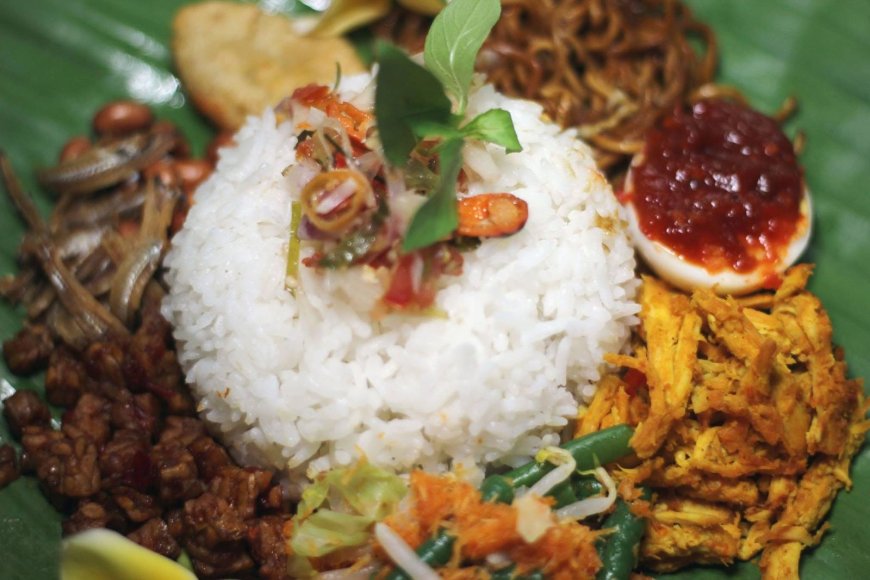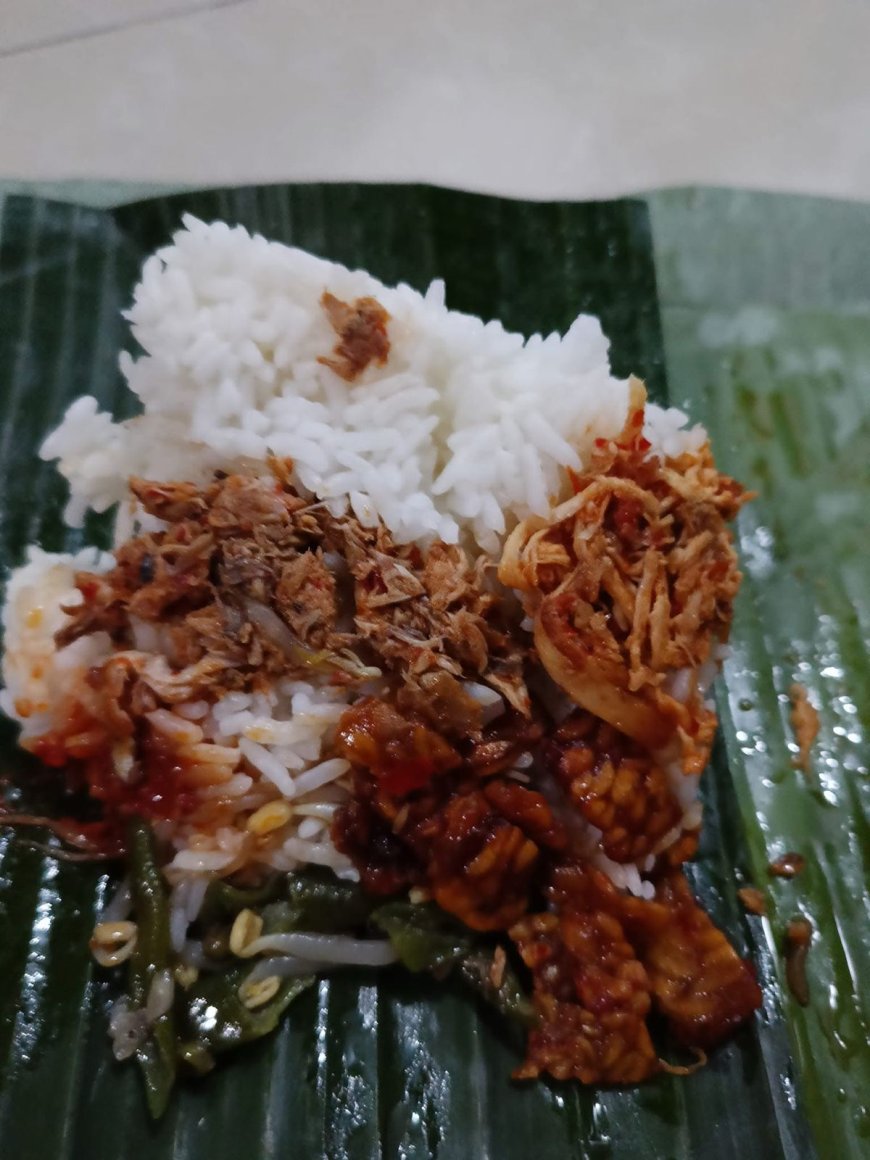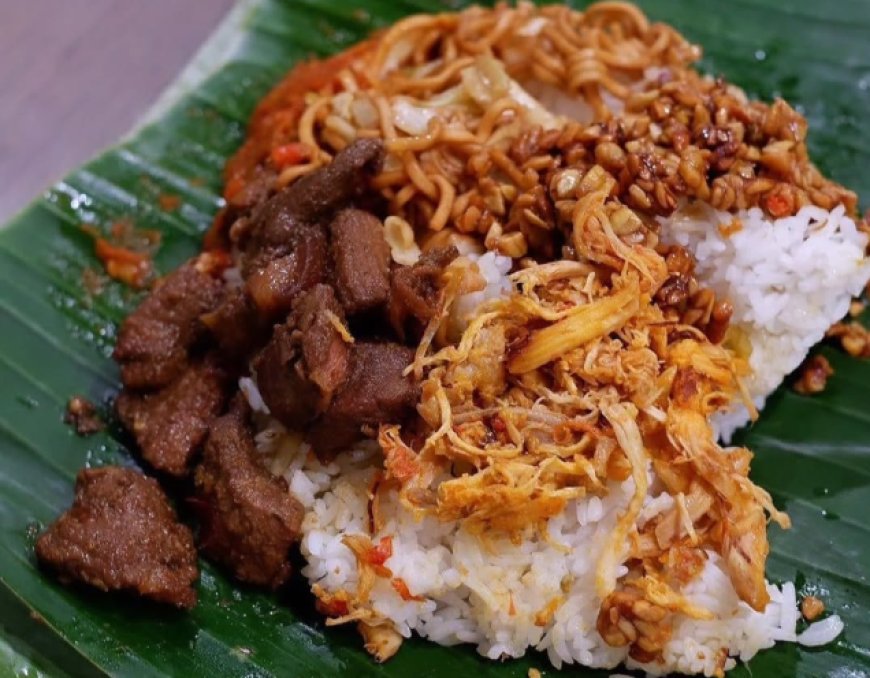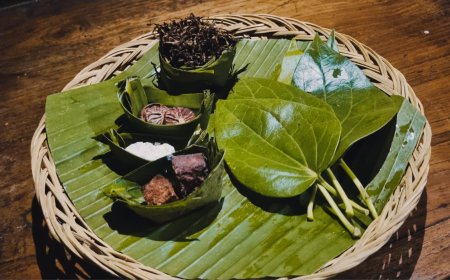Nasi Jinggo: A Traditional Balinese Dish with Appetizing Flavors
Nasi Jinggo is a Balinese culinary icon rich with flavor and cultural significance. Served in a small portion with warm white rice, this dish is accompanied by simple side dishes like spicy shredded chicken, fried noodles, and serundeng (crispy coconut flakes). All elements are neatly wrapped in banana leaves, creating an authentic Balinese sensation. More than just food, Nasi Jinggo represents the practicality and tradition closely tied to Balinese community life. Each bite offers warmth, deliciousness, and memories of the typical hospitality of the Island of the Gods.

Nasi Jinggo, a compact small-sized dish, represents the culinary richness of Bali, presenting a blend of flavors and tradition in one tiny package. Carefully wrapped in banana leaves, this dish offers an authentic culinary experience, combining various traditional side dishes in a practical packaging that reflects the creativity and simplicity of Balinese society.
Cultural Roots and Culinary Evolution
Originating from Balinese eating habits, Nasi Jinggo developed as a culinary solution providing quick and nutritious meals. From small vendors to tourism industry players, this dish has transcended social boundaries, becoming a culinary icon reflecting the spirit of adaptation and cultural diversity in Bali.
Flavor Composition and Ingredient Diversity

Jinggo Rice (Source: Personal Collection)
Each Nasi Jinggo package is a miniature of Balinese flavor complexity. Soft white rice serves as the base, complemented by choices like spicy shredded chicken, balado eggs, long bean vegetables, and characteristic sambal that awakens the palate. Its uniqueness lies in the balanced flavors – spicy, sweet, and savory – presented in a mini portion yet rich in culinary sensation.
Taste Journey from Tradition to Contemporary Times
Nasi Jinggo is more than just food; it's a narrative of Balinese culinary cultural journey. From roadside warungs to high-end restaurants, this dish has transformed, maintaining its traditional essence while adapting to modern tastes. Contemporary chefs now explore creativity, adding innovative touches without losing its original identity.
Social and Culinary Significance
Beyond its simple packaging, Nasi Jinggo tells a philosophy of togetherness and simplicity of Balinese society. The dish represents the spirit of self-sufficiency, creativity within limitations, and the ability to create deliciousness from simple ingredients. Each package is an invitation to explore the depth of the Island of the Gods' culinary traditions.
Nasi Jinggo's Charm in the Modern Culinary Landscape

Jinggo Rice Content (Source: Personal Collection)
In the era of culinary globalization, Nasi Jinggo proves its resilience as a gastronomic icon. For tourists, this dish is an entry point to understanding Bali's flavor complexity. For locals, Nasi Jinggo is a memory of tradition, a connection linking past and present in an unbroken culinary journey.
Nasi Jinggo is more than a dish—it's a story, a taste journey that invites every consumer to experience the depth and uniqueness of Balinese culinary heritage in one small, memorable bite.
































































